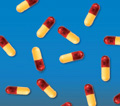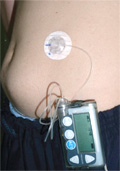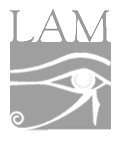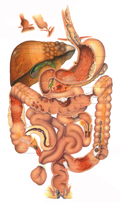The eLitMed.hu medical portal uses computer cookies for convenient operation. Detailed information can be found in the Cookie-policy.
Lege Artis Medicinae - 2009;19(10)
Content
[Effect of beta blockers in hypertension, ischaemic heart disease, heart failure and metabolic syndrome]
[Beta-blockers are among the most widely used drugs for the treatment of cardiovascular diseases. In the mid-90’s, these drugs were recommended as first-line therapies of hypertension. With the introduction of new drugs, the list of first-choice drugs has been extended. The results of recently published major hypertension trials, which compared conventional agents (beta blockers and/or diuretics) with newer agents (angiotensin converting enzyme inhibitors, Caantagonists, angiotensin receptor blockers), raised concerns regarding the role of beta blockers in cardiovascular primary prevention. Subsequently, a metaanalysis of 13 trials has shown that compared with other drug types, beta-blocker therapy is less beneficial in patients with hypertension who do not have heart disease. Nevertheless, in cardiovascular indications other than hypertension (acute myocardial infarction, heart failure and arrhythmias), betablockers retain their dominant position.]
[Antibiotic treatment of intra-abdominal infections, focusing on secondary peritonitis]
[The morbidity and lethality of intra-abdominal infections are still high. Their first-line therapies include surgical or image-guided interventions. Adjuvant therapy with a broad-spectrum antibiotic is crucial for the treatment of polymicrobial infections. As initiation of the therapy is urgent, the antibiotic must be chosen empirically. Pathogens of community-acquired and nosocomial intra-abdominal infections are greatly different. The type of microbes, the general status of the patients, and the severity of their disease determine the choice of antibiotic or antibiotic combination. Using an adequate initial antibiotic decreases postoperative mortality and morbidity. Emerging new pathogens and the resistance of known germs against multiple antibiotics complicates the selection of the antiinfective therapy. Tigecycline is a new tetracyclin-derivative that offers a novel therapeutic option owing to its broad spectrum and efficiency against “problematic bacteria”. The current guidelines facilitate the selection of an empirical therapy, but they do not replace the individualised therapeutic approach.]
[In vitro sensitivity of human anaerobic pathogenic bacteria for tigecycline and comparative antibiotics in Hungary - Prospective multicentre trial]
[INTRODUCTION - Tigecycline, the first member of the glycylcycline family of antibiotics, is a semisynthetic derivative of minocycline. The modified tetracycline nucleus is protected against the resistance mechanisms that inactivate tetracyclines, thus tigecycline is expected to be effective against tetracycline- resistant strains. The aim of this multicenter survey, performed in 2007 and 2008 by three Hungarian laboratories, was to examine the efficiency of this drug against antianaerobic bacteria in vitro. MATERIALS AND METHODS - The participating laboratories isolated 540 strains of Gram-positive and Gram-negative anaerobic bacteria from various infectious sites. These sites represent the classes of infections for which tigecycline was recently approved as a treatment option (skin and soft tissue and intra-abdominalinfections), or for which it will be licensed in the near future (lower respiratory tract infections). Evaluation of antibiotic susceptibility was performed by Etest, and the efficiencies of six antibiotics were determined using MIC values. RESULTS - The 540 strains belonged to 33 different species. Of the 104 strains of Gram-positive anaerobic cocci, 100% proved to be susceptible to tigecycline. Similarly, 98% of the examined Clostridium strains showed susceptibility to this antibiotic. Two of the 56 Prevotella strains were resistant against tigecycline. MIC50 and MIC90 values in the 280 Bacteroides strains were 0.5 μg/ml and 1 μg/ml, respectively, whereas only 1.8% of the tested strains showed low resistance. CONCLUSION - Similarly to the findings of international surveys, our results show that tigecycline is effective against the great majority (97.4% susceptibility) of relevant anaerobic bacteria that are isolated from skin and soft tissue, intra-abdominal and lower respiratory tract infections. Thus, empiric use of tigecycline is recommended in any infections where anaerobic bacteria alone or a mixed flora of aerobic and anaerobic bacteria are likely to be present.]
1.
Clinical Neuroscience
Is there any difference in mortality rates of atrial fibrillation detected before or after ischemic stroke?2.
Clinical Neuroscience
Factors influencing the level of stigma in Parkinson’s disease in western Turkey3.
Clinical Neuroscience
Neuropathic pain and mood disorders in earthquake survivors with peripheral nerve injuries4.
Journal of Nursing Theory and Practice
[Correlations of Sarcopenia, Frailty, Falls and Social Isolation – A Literature Review in the Light of Swedish Statistics]5.
Clinical Neuroscience
[Comparison of pain intensity measurements among patients with low-back pain]1.
Clinical Neuroscience Proceedings
[A Magyar Stroke Társaság XVIII. Kongresszusa és a Magyar Neuroszonológiai Társaság XV. Konferenciája. Absztraktfüzet]2.
3.
Journal of Nursing Theory and Practice
[A selection of the entries submitted to the literary contest "Honorable mission: the joys and challenges of our profession" ]4.
Journal of Nursing Theory and Practice
[End of Life and Palliative Care of Newborns in the Nursing Context]5.
Journal of Nursing Theory and Practice
[Aspects of Occupational Health Nursing for Incurable Patients ]




















